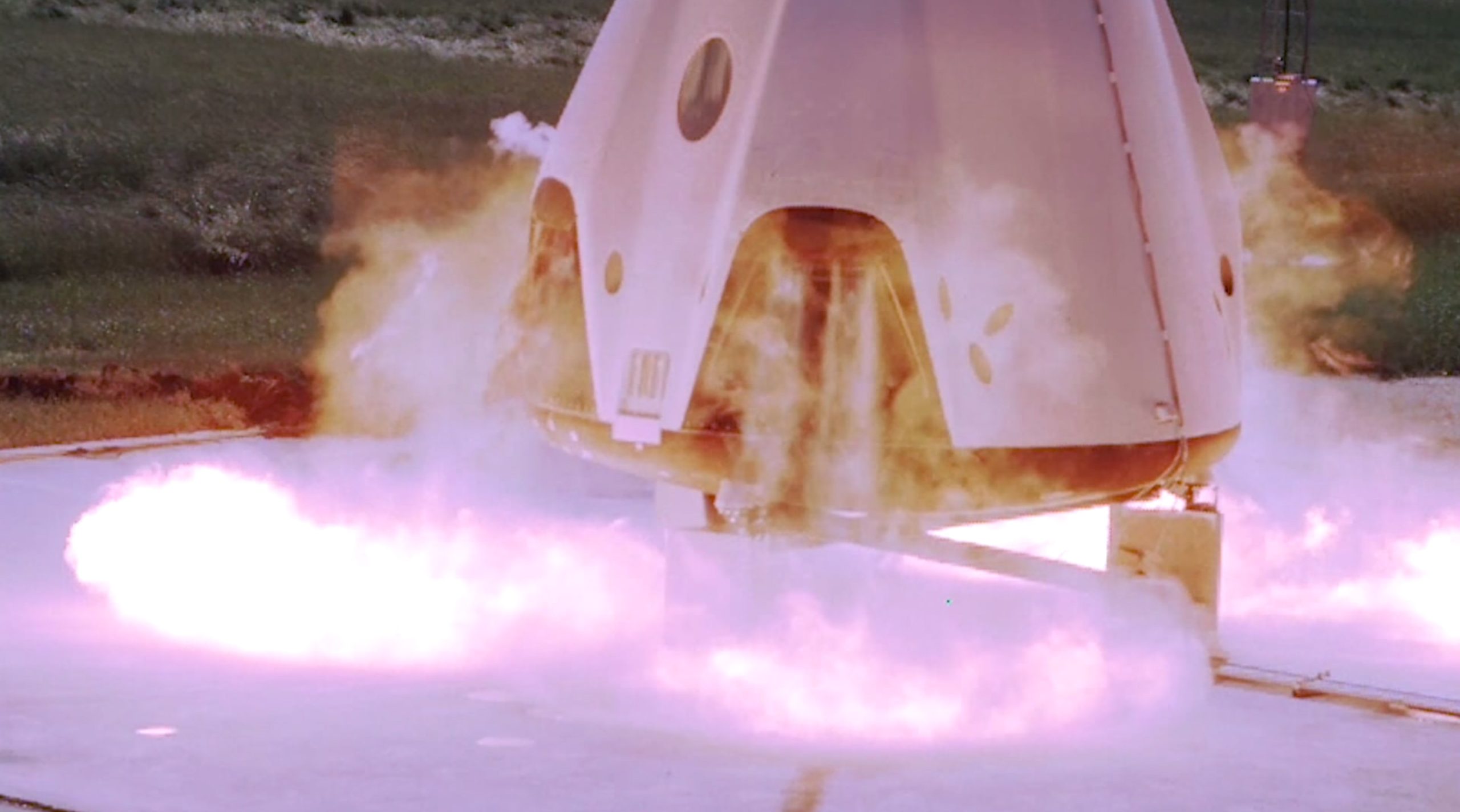
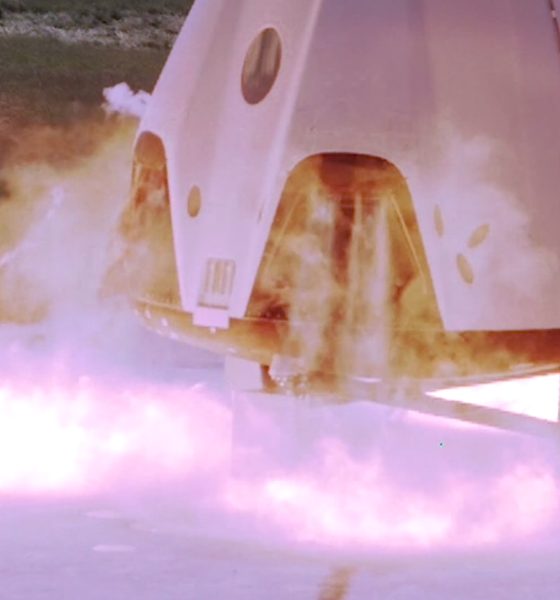
News
SpaceX says Crew Dragon capsule exploded due to exotic titanium fire
SpaceX has announced via an official update and conference call the preliminary results of a failure investigation convened immediately after Crew Dragon capsule C201 exploded in the midst of an April 20th static fire test.
Hosted by SpaceX Vice President of Mission Assurance Hans Koenigsmann and NASA Commercial Crew Program manager Kathy Lueders, the call provided some minor additional insight beyond a fairly extensive press release issued just prior. According to the preliminary results from SpaceX’s failure investigation, Crew Dragon’s explosion was unrelated to the spacecraft’s propellant tanks, Draco maneuvering thrusters, or SuperDraco abort engines. Rather, the cause lies in a more exotic and unanticipated chemical/material interaction between a plumbing valve, liquid oxidizer, and a helium-based pressurization system.
When metal burns
According to Hans Koenigsmann, SpaceX is approximately 80% of the way through what is known as the fault tree, essentially meaning that the failure investigation is 80% complete. That additional 20% could certainly throw some curveballs but the SpaceX executive was fairly confident that the results presented on July 15th would be representative of the final conclusion.
The ultimate (likely) cause of Crew Dragon’s extremely energetic and destructive explosion centers around the spacecraft’s extensive SuperDraco/Draco plumbing and its associated pressurization system, which uses helium to keep the pressure-fed engines, propellant tanks, and feed lines around 2400 psi (16.5 megapascals). Necessarily, this method of pressurization means that there is direct contact between the pressurant (helium) and the oxidizer/fuel, thus requiring some sort of valve preventing the pressurized fluid from flowing into the pressurization system.
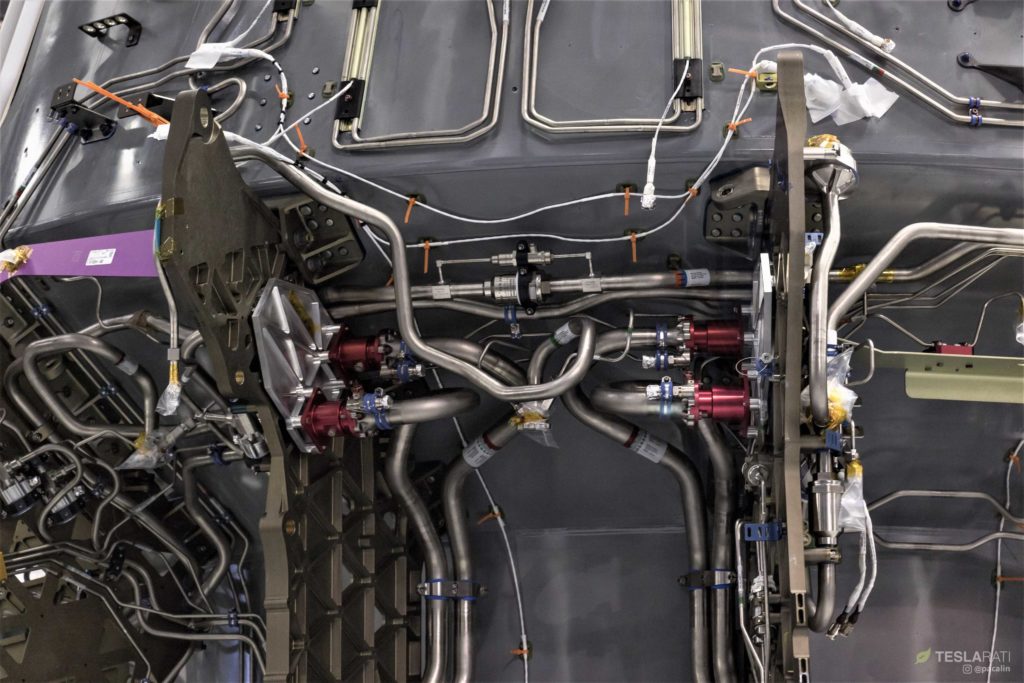
During flight-proven Crew Dragon capsule C201’s April 20th static fire testing, that is reportedly exactly what happened. Over the course of ground testing, a “check valve” separating the pressurization system and oxidizer leaked what SpaceX described as a “slug” of nitrogen tetroxide oxidizer (NTO) into the helium pressurization lines. Around T-100 milliseconds to a planned ignition of the vehicle’s 8 SuperDraco abort engines, the pressurization system rapidly “initialized” (i.e. quickly pressurized the oxidizer and fuel to operational pressures, ~2400 psi).
To do this, helium is rapidly pushed through a check valve – designed with low-molecular-mass helium in mind – to physically pressurize the propellant systems. Unintentionally, the NTO that leaked ‘upstream’ through that valve effectively was taken along for the ride with the high-pressure burst of helium. In essence, picture that you crash your car, only to discover that your nice, fluffy airbag has accidentally been replaced with a bag of sand, and you might be able to visualize the unintended forces Dragon’s check valve (the metaphorical airbag) was subjected to when a “slug” of dense oxidizer was rammed into it at high speed.
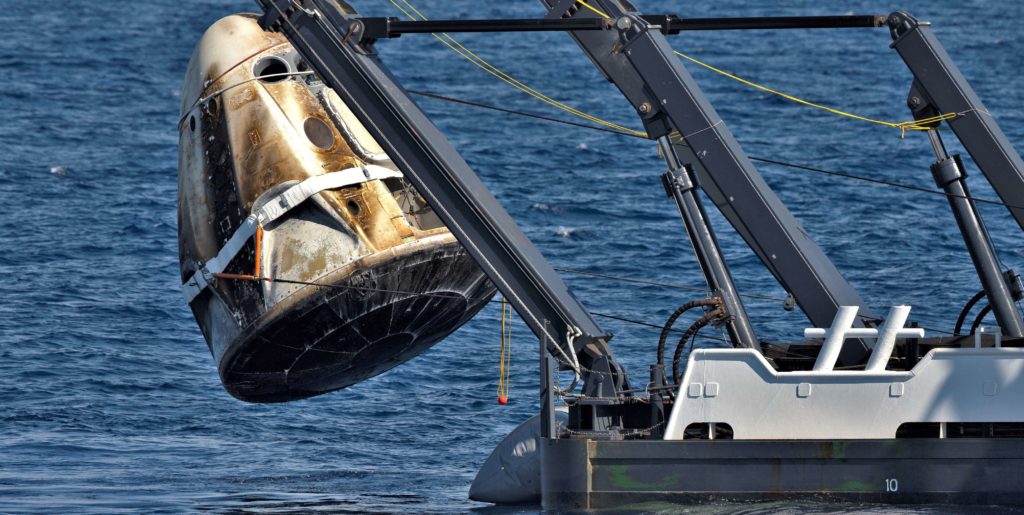
In itself, this sort of failure mode is not hugely surprising and SpaceX may have even been aware of some sort of check valve leak(s) and accepted what it believed to be a minor risk in order to continue the test and perhaps examine Dragon’s performance under suboptimal conditions. What SpaceX says it did not realize was just how energetic the reaction between the NTO and the check valve could be. SpaceX’s understanding is that the high-speed slug of dense NTO was traveling so fast and at such a high pressure that, by impacting the titanium check valve, it quite literally broke the valve and may have chemically ignited the metal, thus introducing a slug of burning NTO into the liberated NTO system itself – effectively a match tossed into a powder keg.
It’s unclear if the ignition came from a chemical reaction between titanium (a technically flammable metal similar to magnesium) and NTO, or if the source came from the titanium valve being smashed apart, perhaps quite literally creating a spark as metal debris violently interacted. Either way, the solution – as SpaceX perceives it – is the same: instead of a mechanical check valve (simple but still not 100% passive), the barrier between pressurant and oxidizer (as well as fuel, most likely) will be replaced with something known as a burst disk. According to Koenigsmann, only a handful (~4) of those valves exist and thus need to be replaced by burst disks, a relatively fast and easy fix.
Burst disks are single-use and inherently unreusable, but they are also completely passive and simply do not leak until subjected to a specific amount of pressure. Because they are single-use, they can’t be directly tested prior to flight, limiting some of the in-principle reliability for the sake of an extremely leak-proof barrier.
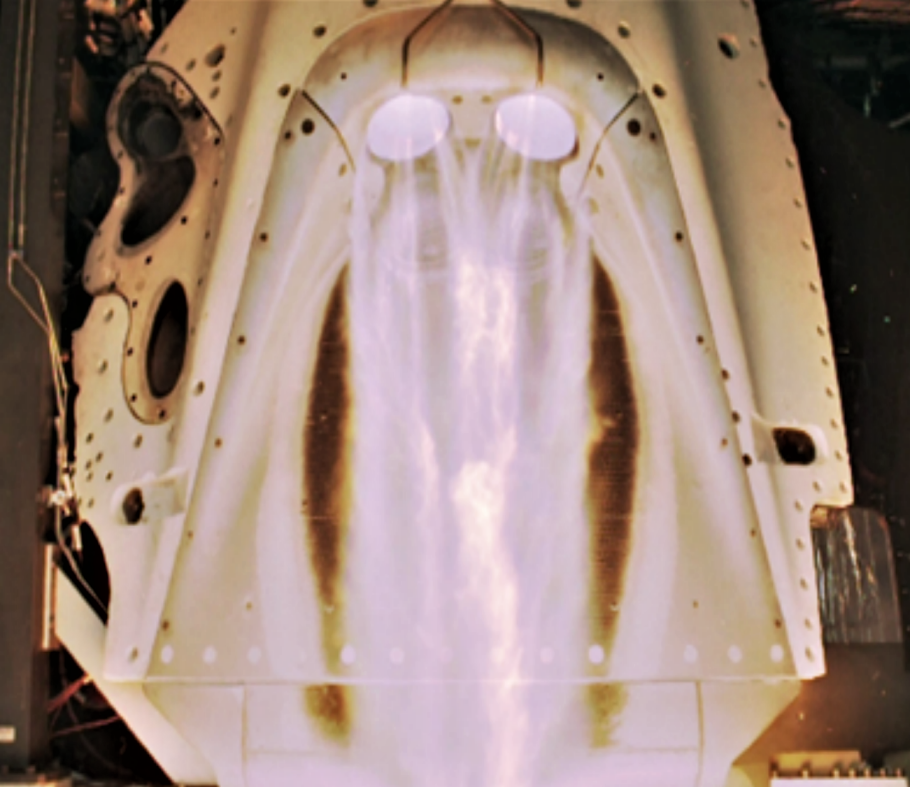
Ultimately, both Koenigsmann and Lueders went out of their way to avoid answering any questions about SpaceX’s Crew Dragon upcoming test and launch schedule and what sort of delays the explosion will ultimately incur. Both individuals were nevertheless upbeat and by the sound of it, delays to Crew Dragon will be far less severe relative to delays caused by a pressure vessel or engine failure. For the time being, NASA has published a tentative target of mid-November 2019 for Crew Dragon’s first crewed launch to the International Space Station, while Lueders and Koenigsmann expressed hope in a 2019 launch but refused to give a specific estimate of the odds of that occurring.
Check out Teslarati’s Marketplace! We offer Tesla accessories, including for the Tesla Cybertruck and Tesla Model 3.

Elon Musk
Elon Musk’s Biggest Revelations on AI, Robots, and the Future of Work from the Moonshots Podcast

Elon Musk’s appearance on the Moonshots with Peter Diamandis podcast was packed with bold predictions, candid admissions, and surprising tech insights. The nearly three-hour conversation covered everything from artificial intelligence to humanoid robots, geopolitics, and the future of work. Here are the top 10 most intriguing takeaways:
-
Aggressive AGI Timeline Predictions
Musk offered a detailed view on when artificial general intelligence (AGI) could emerge, suggesting it may arrive sooner than many expect, emphasizing both transformative potential and risks.
-
U.S. vs. China in the AI Race
He discussed the strategic competition between the United States and China over AI development, noting that geopolitical dynamics will shape how and who leads in the next decades.
-
Future of Job Markets
Musk touched on how AI and automation could reshape employment, predicting massive boosts in productivity alongside potential disruptions in traditional work structures.
-
Clean Energy Transition
A recurring theme was the role of clean energy in future economies, with Musk reiterating the importance of scaling sustainable power generation and storage.
-
Humanoid Robots Are Coming
On the podcast, Musk elaborated on Tesla’s work on humanoid robots, hinting at timelines and applications that go beyond factories to general-purpose assistance.
-
Tesla Roadster “Last Human-Driven Car”
Outside the core discussion topics, Musk teased features of the upcoming Tesla Roadster — calling it “the best of the last of the human-driven cars” and suggesting safety won’t be its main selling point.
-
The Role of AI in Clean Energy and Robotics
Linking AI to both energy optimization and robotics, Musk explained how smarter systems could accelerate decarbonization and task automation across industries.
-
U.S. Innovation Leadership
Musk argued that maintaining American leadership in key tech sectors like AI, space, and robotics should be a national priority, with thoughtful policy and investment.
-
Job Creation vs. Job Elimination
While acknowledging automation’s disruptive effects, he also outlined scenarios where new industries and opportunities could emerge, particularly in AI, space, and advanced manufacturing.
-
Long-Term Vision for Humanity
Throughout the conversation, Musk revisited his long-term philosophical views — including a belief in humanity’s responsibility to become a multi-planetary and technologically empowered species.
Whether you agree with Musk’s optimism or not, the podcast offers a window into the thinking of one of the most influential figures in tech today, in and why his visions continue to spark debate and inspiration.
Elon Musk
Elon Musk just said some crazy stuff about the Tesla Roadster

Elon Musk appeared on the Moonshots podcast with Peter Diamandis today to discuss AGI, U.S. vs. China, Tesla, and some other interesting topics, but there was some discussion about the upcoming unveiling of the Roadster, the company’s electric supercar that will arrive several years after it was initially slated for release.
Musk made some pretty amazing claims about the Roadster; we already know it is supposed to be lightning-fast and could even hover, if Tesla gets everything to happen the way it wants to. However, the car has some pretty crazy capabilities, some of which have not even been revealed.
On the podcast, Musk said:
“This is not a…safety is not the main goal. If you buy a Ferrari, safety is not the number one goal. I say, if safety is your number one goal, do not buy the Roadster…We’ll aspire not to kill anyone in this car. It’ll be the best of the last of the human-driven cars. The best of the last.”
🚨 Elon on the Roadster unveiling, scheduled for April 1:
— TESLARATI (@Teslarati) January 6, 2026
Musk makes a good point: people who buy expensive sports cars with ridiculous top speeds and acceleration rates do not buy them to be safe. They hope they are safe in case of an emergency or crash, but safety is not at the forefront of their thoughts, because nobody buys a car thinking they’ll crash it.
The Roadster is truly going to push the limits and capabilities of passenger vehicles; there’s no doubt about that. Tesla plans to show off the new version car for the first time on April 1, and Musk has only hinted at what is possible with it.
Musk said back in November:
“Whether it’s good or bad, it will be unforgettable. My friend Peter Thiel once reflected that the future was supposed to have flying cars, but we don’t have flying cars. I think if Peter wants a flying car, he should be able to buy one…I think it has a shot at being the most memorable product unveiling ever. [It will be unveiled] hopefully before the end of the year. You know, we need to make sure that it works. This is some crazy technology in this car. Let’s just put it this way: if you took all the James Bond cars and combined them, it’s crazier than that.”
Production is set to begin between 12 and 18 months after the unveiling, which would put the car out sometime in 2027. Hopefully, Tesla is able to stay on track with the scheduling of the Roadster; many people have been waiting a long time for it.
News
Tesla launches hiring for Robotaxi program in its twentieth country
Overall, the hiring signals Tesla’s aggressive timeline for global dominance in autonomous mobility.

Tesla has launched a hiring initiative for its Robotaxi program in its twentieth country, as the company posted two new jobs in Thailand this week.
Tesla is hiring in Bangkok and Kowloon for the Vehicle Operator position, which is related to data collection, and is the first in Thailand, but the twentieth country overall, as the company tries to expand into other markets.
🚨 BREAKING: Tesla is hiring additional full-time Vehicle Operators in Bangkok, Thailand.
Previous openings were 6-month, part-time roles. These are equivalent to AI Safety Operator roles in the U.S. pic.twitter.com/R6LzoU1bos— Tesla Yoda (@teslayoda) January 5, 2026
Tesla has had active job postings for Vehicle Operator positions in the United States, India, Israel, Taiwan, Germany, the Czech Republic, Hungary, the UK, Finland, Switzerland, Sweden, the Netherlands, Austria, Spain, Norway, Italy, and Turkey in past listings.
These postings are not all currently available, likely because the roles have been filled.
Thailand is the most recent, and broadens the company’s potential path to expanding its ride-hailing program, which is only active in the United States in Austin, Texas, and the California Bay Area, so far.
These roles typically involve data collection, which assists in improving Autopilot and Full Self-Driving operation. Tesla’s self-driving programs utilize real-world data that is accumulated and stored, observing vehicle and traffic behavior, as well as tendencies that are performed by human drivers to help increase safety and overall performance.
Overall, the hiring signals Tesla’s aggressive timeline for global dominance in autonomous mobility. Although the company has several high-profile rivals and competitors in the field, it has established itself as a main player and a leader in the development of autonomous technology, especially in the U.S., as its FSD suite is refined on almost a weekly basis.
The Full Self-Driving suite is available in seven countries and territories currently, including the U.S., Canada, China, Mexico, Puerto Rico, Australia, and New Zealand. Its biggest goal for expansion is currently the European market, where regulatory hurdles have been the main bottleneck prolonging its launch on the continent.
Tesla has performed months of testing in various European countries, including France and Spain, and does have support in some areas from various regulatory agencies. However, the company is hoping to get through this red tape and offer its suite in Europe for the first time, hopefully this year.








